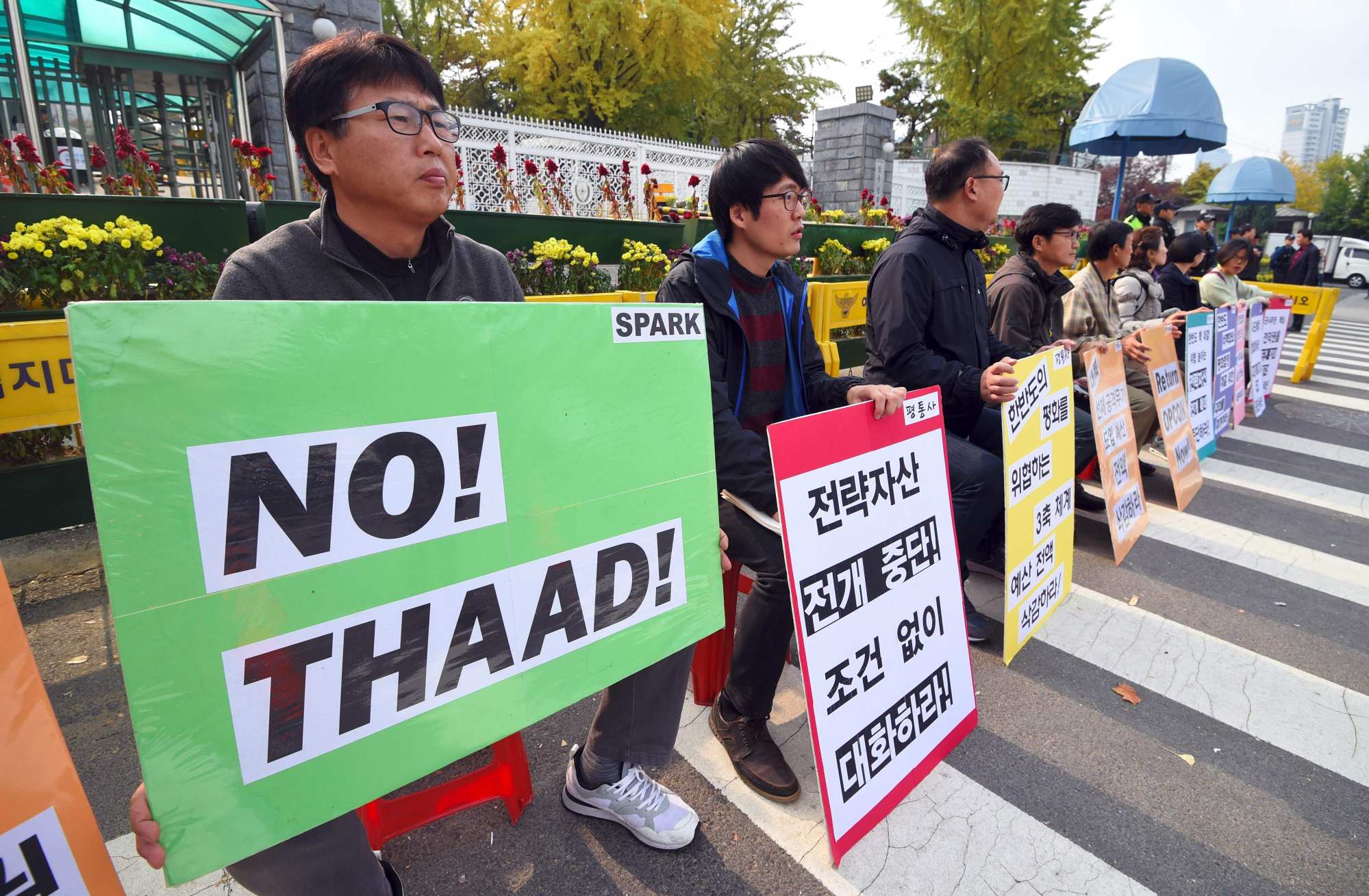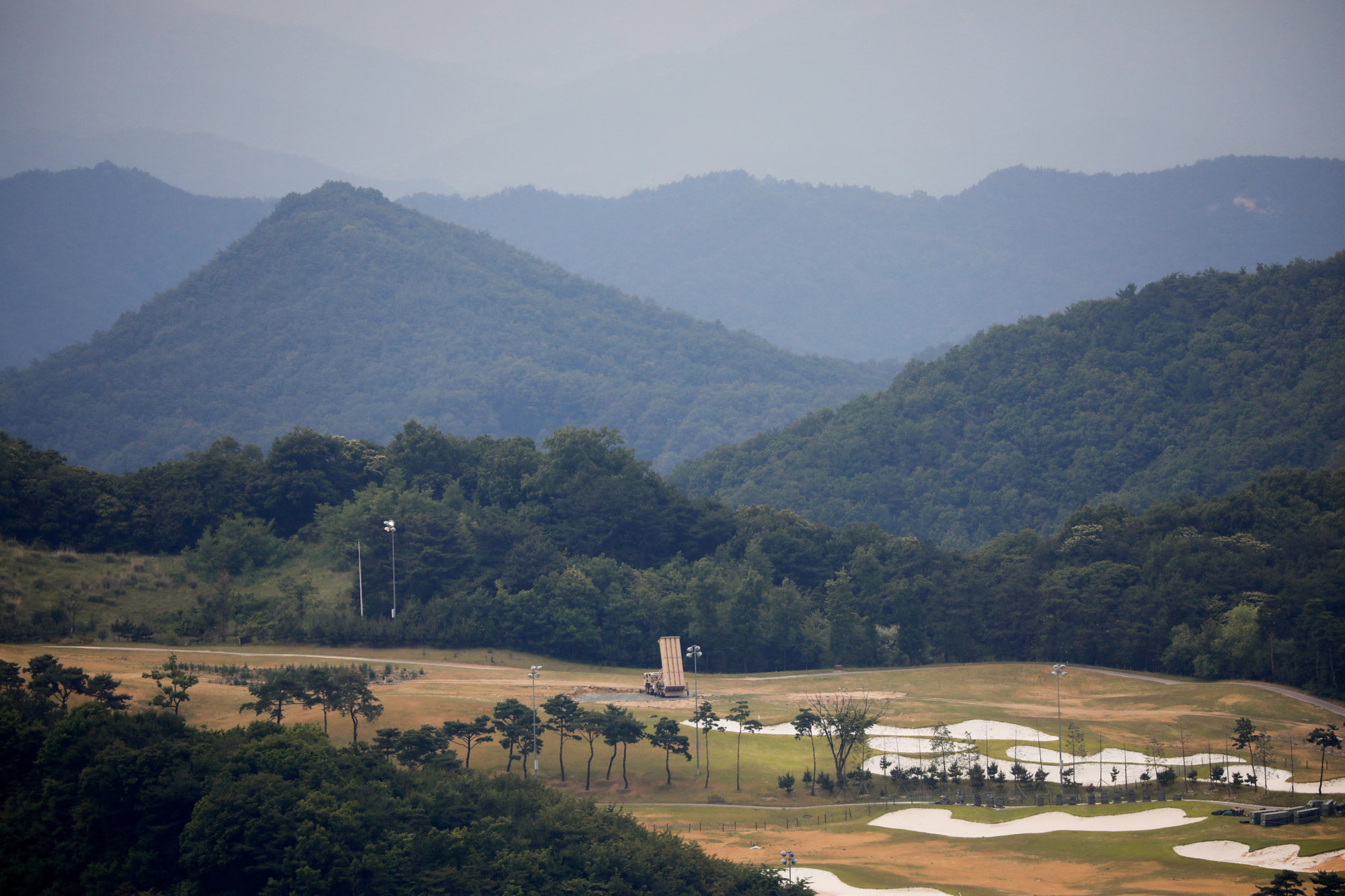
South Korea moves to improve US-made THAAD system despite domestic opposition
- South Korea has formed a committee to assess the environmental impact of the system and aims to conclude the evaluation in the first half of 2023
- County residents and activists have staged daily sit-ins to block access to the construction site
Officials earlier this month formed a consultative committee – consisting of government officials, experts and a representative from residents – to assess the environmental impact of the THAAD system in the southeastern county of Seongju, Defence Minister Lee Jong-sup told the National Assembly on Monday.
S Korea seeks buyers for KF-21 fighter jets that could ‘rival’ China warplanes
Construction at the 700,000-square-metre site can start only after the environmental impact survey is completed. While such assessments typically take more than a year, officials aim to complete the exercise in the first half of 2023.
Activists and county residents have decried the decision, calling it an anti-China move and criticising the government of acting without “due legal process”.
“The government is rushing the environment impact survey without due legal processes behind closed doors. THAAD is not for the defence of South Korea but it’s aimed at China,” said leading activist Kang Hyun-wook.
An umbrella group of protesters against THAAD has said that it would resort to all means possible to prevent the construction.

Since May 2021, Seongju county residents and protesters have been staging sit-ins from dawn till evening, to physically block vehicles carrying supplies and construction materials to the site, often forcing hundreds of riot police to clear them off the road.
“THAAD marks the start of the US missile defence network in the region. The US wants to confirm whether the Yoon government can overcome resistance from residents and protests from China to deploy THAAD and more of it,” Kim said.
South Korea eyes new missile shield to replace US system that angered China
South Korea currently hosts a THAAD battery, which reportedly has four truck-mounted launchers with eight interceptor missiles each in Soseong-ri, a farming village in Seongju County.
Since its deployment in September 2017, the THAAD battery has been ready to detect and intercept the North’s ballistic missiles.
South Korea plays down concerns over move to join US-led chip alliance
Returning to Seoul following his three-day trip to Qingdao city, however, Park said he had made clear in talks with Wang that it was “neither an agreement nor a promise” made to Beijing.
He also suggested Moon’s “three-no” principle was not binding for the Yoon administration, which seeks to bolster South Korea’s alliance with the US.
Woo Sang-ho, then-interim head of the opposition Democratic Party, criticised the Yoon government for “stirring up a hornet’s nest”.

He asserted that the Moon government had handled the prickly issue calmly in light of ongoing US-China confrontations and fierce protests by residents in Seongju County.
But the liberal Moon Jae-in administration, which succeeded her, did not proceed with the construction of the base.
Yoon has vowed to mend ties with Japan as bilateral relations between the two neighbours have long been dogged by history-related issues and territorial disputes.

